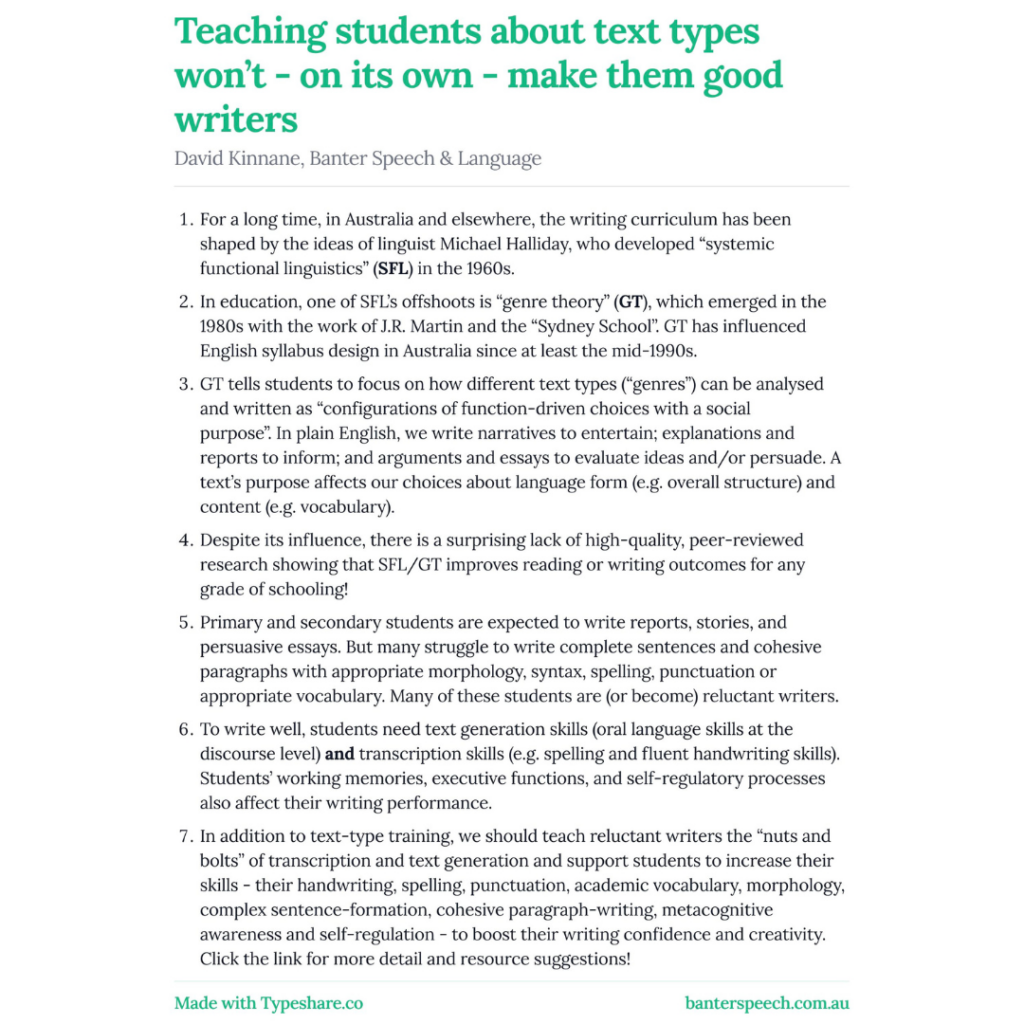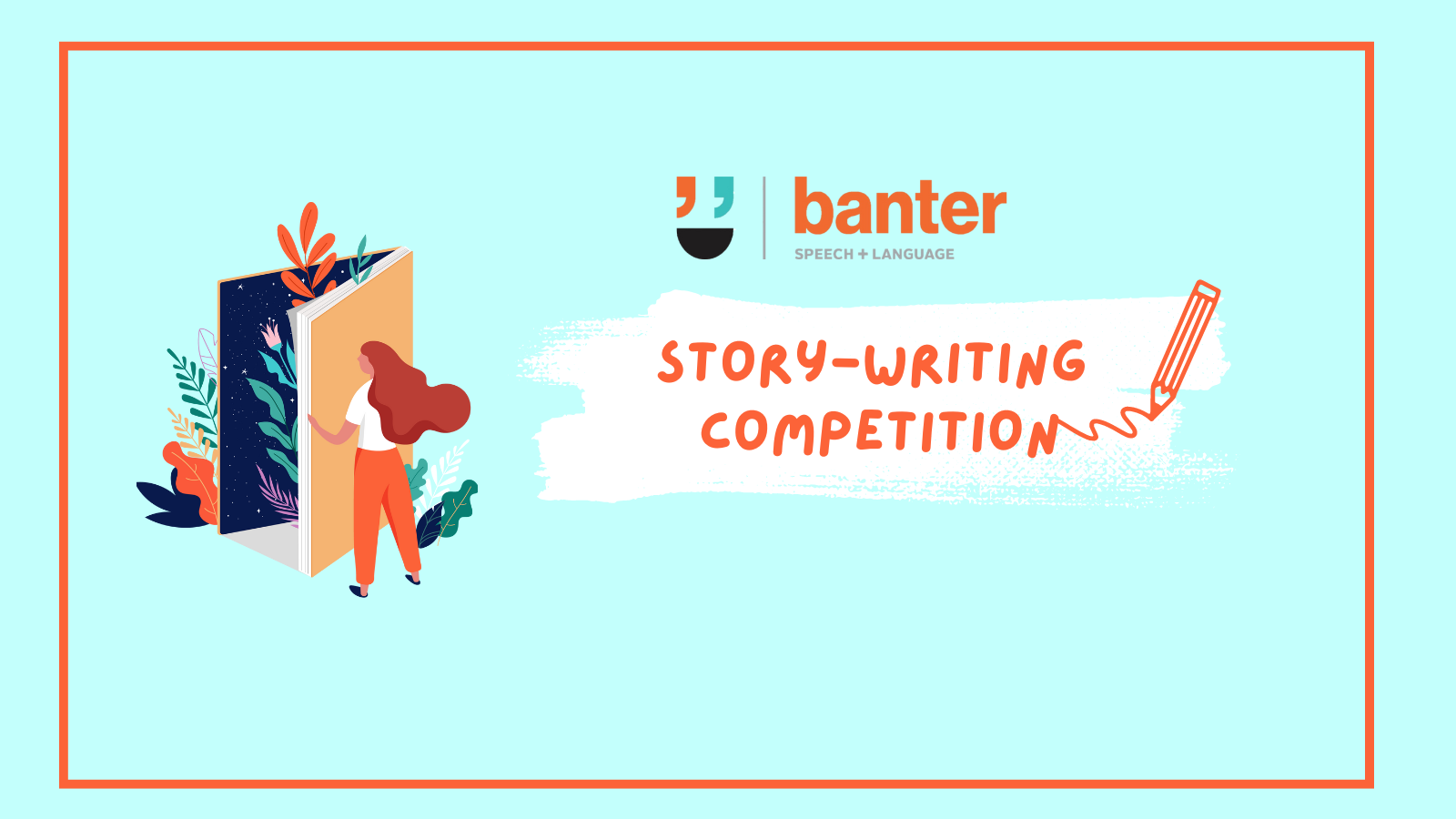Teaching students about text types won’t – on its own – make them good writers
For a long time, in Australia and elsewhere, the writing curriculum has been shaped by the ideas of linguist Michael Halliday, who developed “systemic functional linguistics” (SFL) in the 1960s.
In education, one of SFL’s offshoots is “genre theory” (GT), which emerged in the 1980s with the work of J.R. Martin and the “Sydney School”. GT has influenced English syllabus design in Australia since at least the mid-1990s.
GT tells students to focus on how different text types (“genres”) can be analysed and written as “configurations of function-driven choices with a social purpose”. In plain English, we write narratives to entertain; explanations and reports to inform; and arguments and essays to evaluate ideas and/or persuade. A text’s purpose affects our choices about language form (e.g. overall structure) and content (e.g. vocabulary).
Despite its influence, there is a surprising lack of high-quality, peer-reviewed research showing that SFL/GT improves reading or writing outcomes for any grade of schooling!
Primary and secondary students are expected to write reports, stories, and persuasive essays. But many struggle to write complete sentences and cohesive paragraphs with appropriate morphology, syntax, spelling, punctuation or appropriate vocabulary. Many of these students are (or become) reluctant writers.
To write well, students need text generation skills (oral language skills at the discourse level) and transcription skills (e.g. spelling and fluent handwriting skills). Students’ working memories, executive functions, and self-regulatory processes also affect their writing performance.
In addition to text-type training, we should teach reluctant writers the “nuts and bolts” of transcription and text generation and support students to increase their skills – their handwriting, spelling, punctuation, academic vocabulary, morphology, complex sentence-formation, cohesive paragraph-writing, metacognitive awareness and self-regulation – to boost their writiang confidence and creativity. Click the links below for more detail and resource suggestions!
Further reading:
Green, C., Giblin, I., & Mulder, J. (2024). A systematic narrative synthesis review of the effectiveness of genre theory and systemic linguistics for improving reading and writing outcomes within K-10 education. The Australian Journal of Language and Literacy, https://link.springer.com/article/10.1007/s44020-024-00060-y

This article also appears in a recent issue of Banter Booster, our weekly round up of the best speech pathology ideas and practice tips for busy speech pathologists, providers, speech pathology students, teachers and other interested readers.
Sign up to receive Banter Booster in your inbox each week:
Related articles:
11 ways to improve writing interventions for struggling students
Dysgraphia: significant difficulties with handwriting, spelling, and/or written expression: FAQs
How to help a disorganised student: some practical ideas and resources
Learning to handwrite fluently gives your child a big advantage
Which words should I teach to a high school student with a small vocabulary?
Why should I learn to write when I can just use ChatGPT and Grammarly?
Persuasive writing is about much more than PEEL, TEEL, NAPLAN, the HSC – or any other acronym!
Help primary school students learn to write with sentence-combining practice

Hi there, I’m David Kinnane.
Principal Speech Pathologist, Banter Speech & Language
Our talented team of certified practising speech pathologists provide unhurried, personalised and evidence-based speech pathology care to children and adults in the Inner West of Sydney and beyond, both in our clinic and via telehealth.








